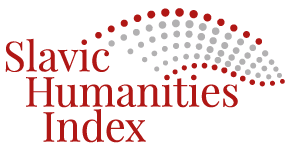Some Observations on the Cultural Inventory of Izmir from the Tanzimat to the Constitutional Monarchy (1839-1876) / Neka zapažanja o kulturnom inventaru Izmira od Tanzimata do uspostavljanja Monarhije (1839-1876)
DOI:
https://doi.org/10.46352/23036974.2021.57Keywords:
Tanzimat, Period of Autocracy, Levantines, Second Constitutional Monarchy, UnionistsAbstract
During the period when the Ottoman Empire remained at the periphery of the capitalist world system, İzmir assumed the identity of a colonial port city which the Levantines, who transferred the rich products of Western Anatolia to the West, and their local collaborators made the center of the commercial diaspora. While İzmir, which lived through its brightest period from the 17th century to the beginning of the 20th century, had the appearance of an ordinary “slightly bigger than a village” town of the Aegean at the western end of the Anatolian plateau, it begins to be seen as the “Pearl of the Levant” with its port, quay, municipal organization, railways, trams, banks, factories, modern schools, casinos, clubs, theaters and coffee houses. In the aforementioned period, İzmir became one of the early modern period cities of the Ottoman Empire with the changes and transformations it went through. This article tries to convey the episodes of the economic, social, and ideological structural transformations in the background of this positive leap that the city had experienced.Downloads
Download data is not yet available.
Downloads
Published
2021-12-31
How to Cite
Bahar, A. (2021). Some Observations on the Cultural Inventory of Izmir from the Tanzimat to the Constitutional Monarchy (1839-1876) / Neka zapažanja o kulturnom inventaru Izmira od Tanzimata do uspostavljanja Monarhije (1839-1876). Journal of the Faculty of Philosophy in Sarajevo (History, History of Art, Archeology) / Radovi (Historija, Historija Umjetnosti, Arheologija), ISSN 2303-6974 on-Line, 8(1), 57–102. https://doi.org/10.46352/23036974.2021.57
Issue
Section
Articles
License
Copyright (c) 2021 Journal of the Faculty of Philosophy in Sarajevo (History, History of Art, Archeology) / Radovi (Historija, Historija umjetnosti, Arheologija), ISSN 2303-6974 on-line

This work is licensed under a Creative Commons Attribution-NonCommercial 4.0 International License.




